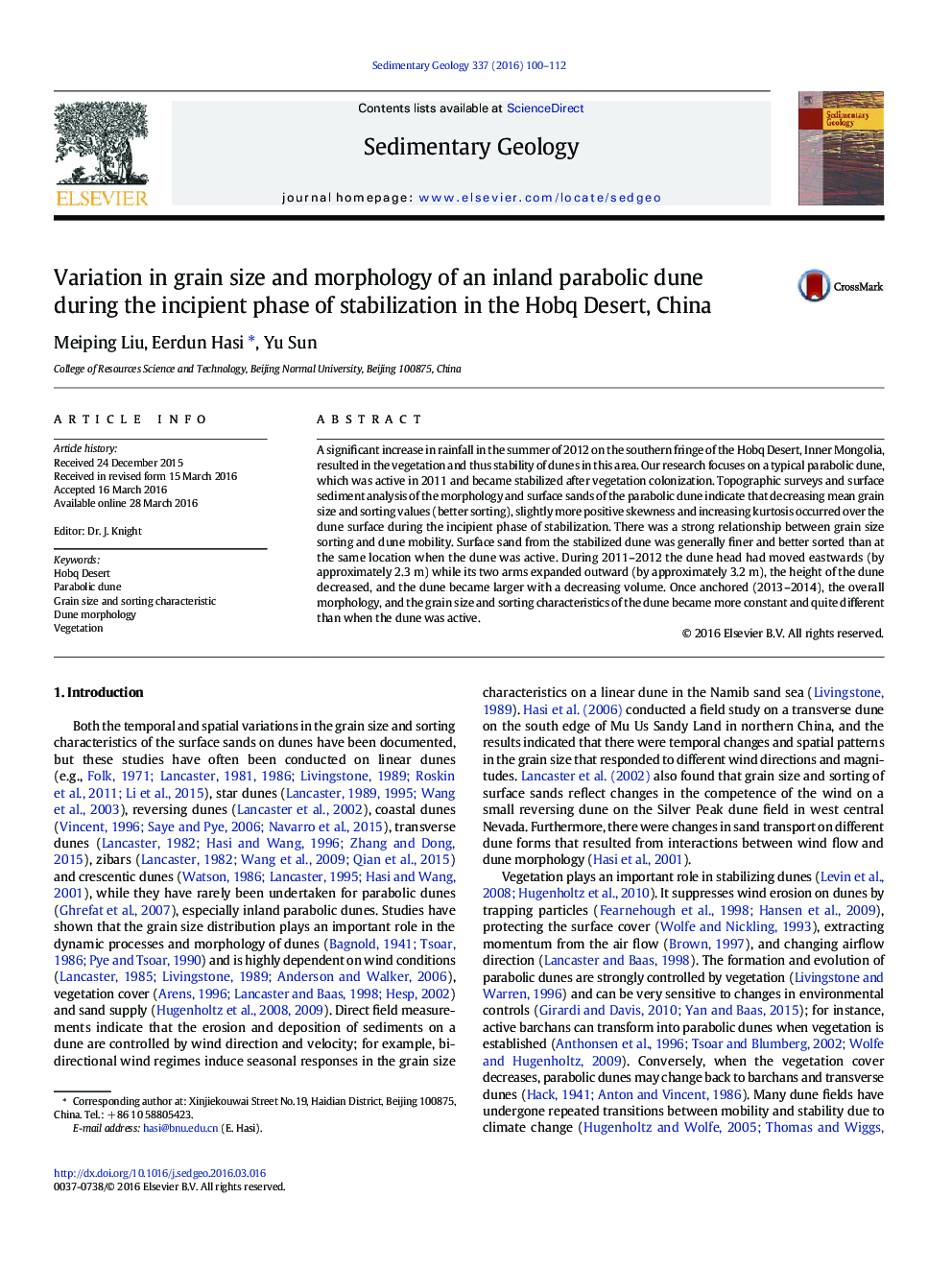| Article ID | Journal | Published Year | Pages | File Type |
|---|---|---|---|---|
| 4689034 | Sedimentary Geology | 2016 | 13 Pages |
•Grain size variation on an inland parabolic dune is proposed.•Comparison of grain size and morphology before and after the dune was stabilized.•Grain size variation is the response to dune mobility and antecedent wind conditions.
A significant increase in rainfall in the summer of 2012 on the southern fringe of the Hobq Desert, Inner Mongolia, resulted in the vegetation and thus stability of dunes in this area. Our research focuses on a typical parabolic dune, which was active in 2011 and became stabilized after vegetation colonization. Topographic surveys and surface sediment analysis of the morphology and surface sands of the parabolic dune indicate that decreasing mean grain size and sorting values (better sorting), slightly more positive skewness and increasing kurtosis occurred over the dune surface during the incipient phase of stabilization. There was a strong relationship between grain size sorting and dune mobility. Surface sand from the stabilized dune was generally finer and better sorted than at the same location when the dune was active. During 2011–2012 the dune head had moved eastwards (by approximately 2.3 m) while its two arms expanded outward (by approximately 3.2 m), the height of the dune decreased, and the dune became larger with a decreasing volume. Once anchored (2013–2014), the overall morphology, and the grain size and sorting characteristics of the dune became more constant and quite different than when the dune was active.
